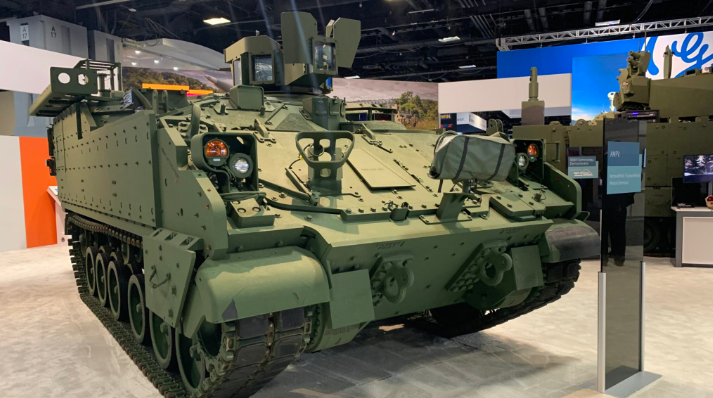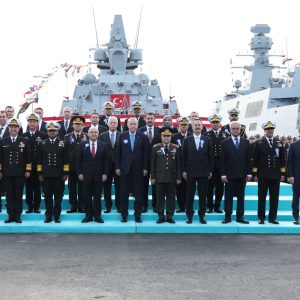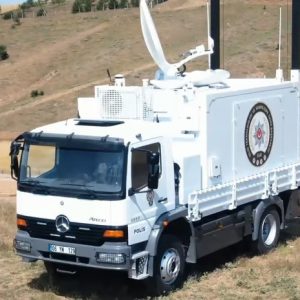
Setting the Stage for the Future
At the forefront of innovation in the defense and aerospace sectors, BAE Systems at AUSA 2023 Unveiling the AMPV-C UAS has once again showcased its commitment to redefining the boundaries of modern warfare. During the esteemed AUSA 2023 event, a significant revelation took the industry by storm: the introduction of the AMPV-C UAS. With unparalleled features and capabilities, this release promises to chart a new trajectory for unmanned systems in global defense scenarios. This article delves into the intricacies of this groundbreaking system and its implications for the future.
The AMPV-C UAS: An In-depth Exploration
1. Genesis of the Idea: The Backstory
Understanding the evolution and inception of the AMPV-C UAS requires a brief journey into BAE Systems’ vision for next-gen warfare tools. With an ever-growing need for unmanned, highly efficient combat solutions, the company undertook rigorous research and development, eventually culminating in the birth of this advanced system.
2. Core Features and Specifications
- Advanced Autonomy: Leveraging cutting-edge AI, the AMPV-C UAS boasts autonomous navigation capabilities, ensuring minimal human intervention.
- Enhanced Stealth Mechanisms: A blend of state-of-the-art design and technology ensures the UAS remains virtually undetectable in hostile environments.
- Adaptive Combat Skills: With real-time data processing, the system can swiftly adapt to changing combat situations, ensuring strategic advantages.
3. Integration Capabilities
Interoperability remains a cornerstone of modern defense solutions. BAE Systems has ensured that the AMPV-C UAS seamlessly integrates with existing military infrastructure, from communication systems to weaponry, facilitating smoother operations.
Implications for Modern Warfare
1. Strategic Edge in Combat
The AMPV-C UAS offers armed forces an edge in terms of strategy. Its ability to undertake high-risk missions without endangering human life could significantly alter combat strategies, leaning towards a more tech-centric approach.
2. Reconnaissance Revolutionized
Beyond combat, the potential of the AMPV-C UAS in reconnaissance is immense. With its stealth capabilities, it can provide real-time, high-resolution data from enemy territories, thus bolstering intelligence operations.
3. Enhancing Defense Collaborations
The introduction of such an advanced system underscores the need for global defense collaborations. Countries may seek to integrate the AMPV-C UAS into joint military exercises, ushering in an era of enhanced multinational defense partnerships.
A Glimpse into BAE Systems’ Vision
The unveiling of the AMPV-C UAS offers a glimpse into BAE Systems’ future trajectory. Committed to reimagining the contours of defense solutions, the company is likely to invest further in AI, machine learning, and advanced robotics. The goal? To create a suite of defense solutions that cater to the evolving challenges of the 21st century.
Operational Benefits for Armed Forces
1. Cost-Effective Warfare
The long-term operational costs of the AMPV-C UAS are projected to be lower than traditional warfare systems. This economic efficiency can enable armed forces to allocate resources more judiciously.
2. Minimized Human Risk
With the AMPV-C UAS taking on high-risk missions, the risk to human life in combat zones can be substantially reduced, ensuring the safety of troops.
3. Scalability
Given its integration capabilities, the system offers armed forces the flexibility to scale operations, whether it’s in terms of combat, surveillance, or intelligence.
Future Challenges and the Path Forward
While the AMPV-C UAS promises a revolution in defense, challenges lie ahead:
1. Ethical Implications
The use of AI-driven combat systems will inevitably lead to debates about the ethical implications of such warfare, necessitating clear guidelines and protocols.
2. Technical Obstacles
As with all tech-driven solutions, there will be hurdles in terms of software glitches, hardware malfunctions, and the like. A robust feedback and upgrade mechanism will be crucial.
3. Navigating Global Regulations
Given its capabilities, the AMPV-C UAS will be under the scanner of global defense regulations. Ensuring compliance without compromising on capabilities will be a tightrope walk.
Conclusion
BAE Systems’ introduction of the AMPV-C UAS at AUSA 2023 is more than just a product launch; it’s a statement of intent, a vision for the future. As global defense landscapes shift, such innovations are not mere options but necessities. The world will be closely watching the journey of this system, potentially a harbinger of the next era of warfare.










